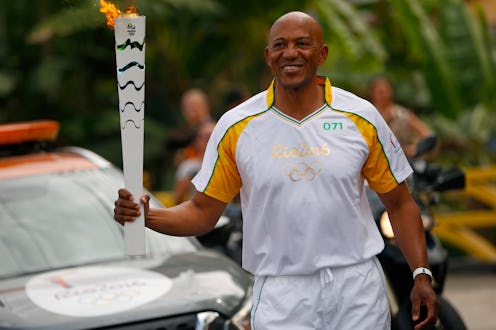News
The Unexpected Route Of The Olympic Torch Relay
While Olympic sports may have evolved over time, one element of the Games has stayed true for nearly a hundred years: the carrying of the Olympic torch. The torch, passed from athlete to athlete over hundreds or thousands of miles, has become an enduring symbol of the purity and strength of athletes. As has been customary for the last 80 years, the Olympic torch relay route began this year in Olympia, Greece. And after moving through thousands of torchbearers' hands, it will make its way to Rio de Janeiro to officially kick off the 2016 Summer Games this week.
The original lighting of the torch was carried out in the Ancient Olympic Games, beginning in 776 B.C. Back then, fire was considered a divine element, and Olympians would not allow the Olympic flame to expire, leaving it to burn perpetually in front of various temples. It's under this same guiding principle that the flaming torch is carried across nearly 12,500 miles of Brazilian road. The modern practice of the Olympic Torch relay began in 1936, with the Summer Games in Berlin.
This year, the torch first made several stops in Greece throughout late April, then moved to Switzerland. But the majority of its journey has been through hundreds of towns in Brazil. Carlos Arthur Nuzman, president of Rio Organizing Committee, commented on the torch's journey through the country: "We want to show the world the chemistry that we believe will be born when the Olympic flame meets the warmth of the Brazilian people."
Protecting the flame in a lantern, Nuzman passed off the torch to Brazilian President Dilma Rousseff as its journey in the country began in May. Rousseff ignited the torch from her presidential palace, setting off the three-month trip.
Beginning in Brasilia in May, the torch has crossed hundreds of cities, and it will ultimately finish its trek in Rio de Janeiro on August 5. Torchbearers, ranging from refugees to former Olympians to mathematicians, will have the torch on display in over 300 Brazilian cities. Adding up their populations of each stop, the flame is estimated to reach nearly 90 percent of the country's citizens. The 12,000-some torchbearers will cross the country on foot and boat, and will likewise travel nearly 10,000 miles more by plane.
With this much effort, which includes detailed coordination with local governments and security, both athletes and viewers will be treated to an old tradition made new again at the start of the 2016 Olympics this week.
